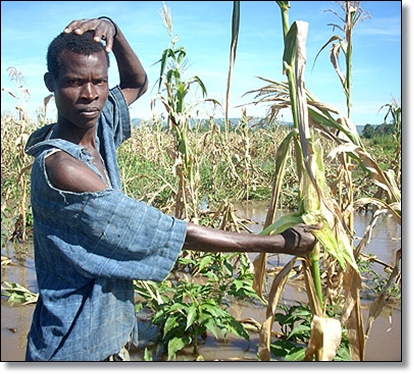Post-conflict Reconstruction: Impact of Floods

 |
|
A Ugandan farmer inspects his flooded farm in Tororo. P.Courtesy |
This briefing paper presents preliminary findings and analysis pertaining to the recent floods within Acholi sub-region. It highlights immediate impacts and predicts future implications for post conflict recovery trends in some parts of Northern Uganda. The rapid assessment surveyed seventeen (17) sub counties in the four districts of: Agago, Pader, Kitgum and Lamwo, from 24 – 31 August 2012. These districts and sub-counties were the most affected even though the torrential rain continues through the Acholi sub-region and more districts may experience flooding. The research team used a combination of thirty-eight (38) in-depth individual interviews and nine (09) focus group discussions with Local government officials and members of the affected communities. While a rapid assessment cannot make a definitive statement on the situation, this briefing sheds light on the dynamics surrounding floods, in order to better understand the extent of the flooding, and to identify critical community needs and assess areas of potential interventions by different stakeholders.
Key questions investigated include the effects on socio-economic development; access to markets, education and health facilities; and the overall effects on post conflict recovery trend in the sub-region.
Click here to continue reading
